Diamonds are undoubtedly the most famous gemstone and choosing one is not always an easy task.
You are probably wondering what the acronyms relating to a diamond’s quality, for example HSI or GVS stand for. How do you recognise the quality of a diamond? And how do you know if the one you have chosen is the "right" one?
Don't worry, in this guide we will give you all the secrets of the well-renowned precious stone!
But first, let's take a look at the history of diamonds.
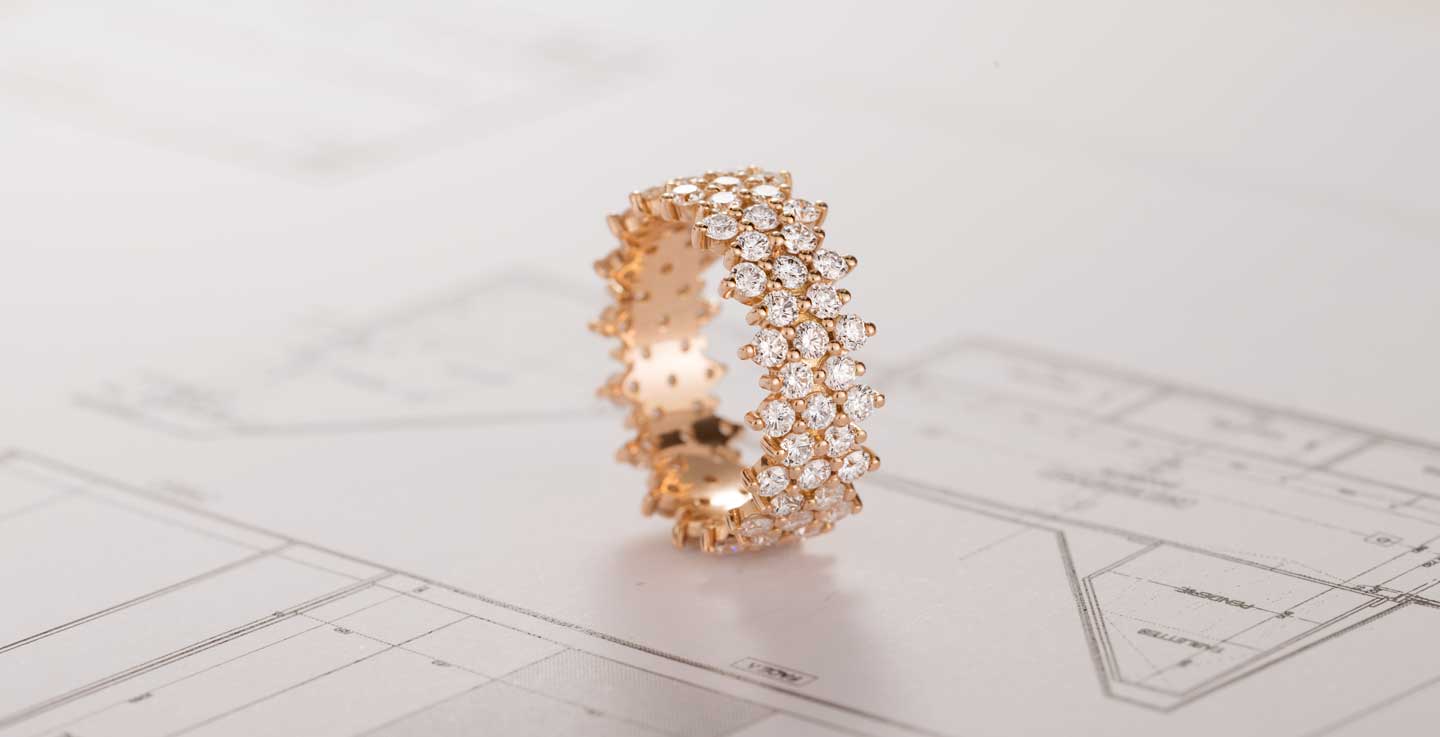
The history of diamonds
The first diamonds were discovered in India about 3,000 years ago.
Since then, deposits have been found all over the world – the largest being in the remains of volcanic eruption columns in a rock called “ kimberlite “.
It is estimated that very few diamonds make it to the surface of the Earth, and only 0.1% of them will be larger than one carat when cut.
Since 1725, when India was first replaced as the world's leading diamond producer, several countries have been stealing the limelight: first Brazil, then South Africa, Botswana, and recently Russia...
Its name alone speaks for itself: it comes from the Ancient Greek adamas, which means unalterable, unbreakable, pure.
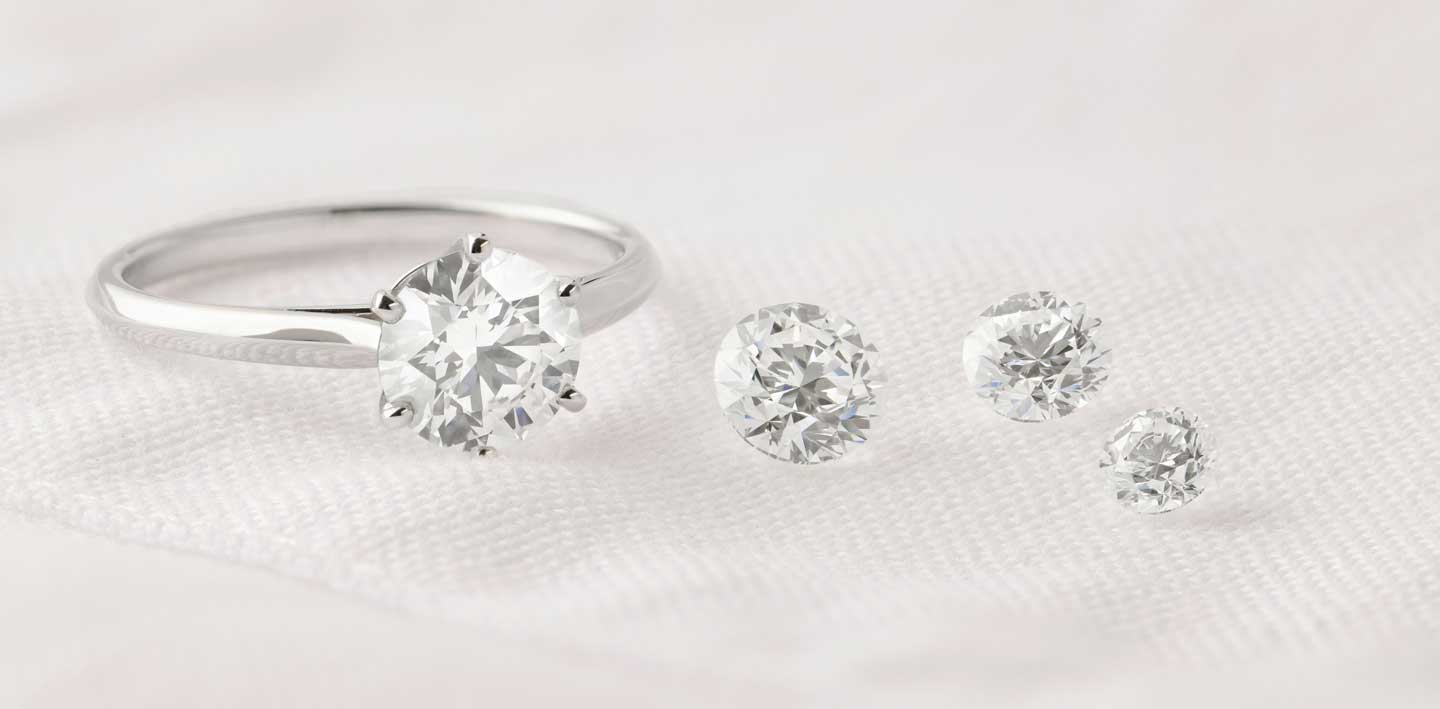
The main characteristics of diamond
Diamonds are 99% carbon, and are a true gem of nature, dating back some 3.3 billion years.
Why is this stone so exceptional?
—— 1. Firstly, it is the hardest natural mineral there is
A 10/10 on the Mohs scale - the reference hardness scale - diamond is the hardest stone on the planet.
By comparison, copper is 3/10, steel 5.5/10, hardened steel 6.4/10.
Only another diamond can scratch a diamond! This does not mean that it is unbreakable... But we will come back to this point in detail a little further down.
—— 2. Diamond has a very high thermal conductivity
The thermal conductivity of diamond is the highest for any known solid. It conducts heat better than silver or even copper! A diamond pan would be very efficient
These two great characteristics make diamond a material widely used in industry. It is used as an abrasive for drilling, cutting and polishing equipment. Finally, its extreme hardness makes it useful for tools such as circular blades... but let's be honest, at Gemmyo, we prefer to use it to decorate jewelry!
—— 3. A palette of unexpected hues
Though the white diamond is a timeless classic, it exists in an endless range of shades, each as rare as it is elegant. At Gemmyo, we have chosen to showcase two remarkable tones:
The chocolate diamond stands out with its deep brown hue, enhanced by warm, satiny reflections. Its subtle brilliance offers an original alternative to the traditional diamond while retaining the signature sparkle and hardness of this precious stone.
The cognac diamond boasts a naturally warm shade, oscillating between amber and rich brown. Its unique play of light gives it a mesmerizing glow, revealing its distinctive character.
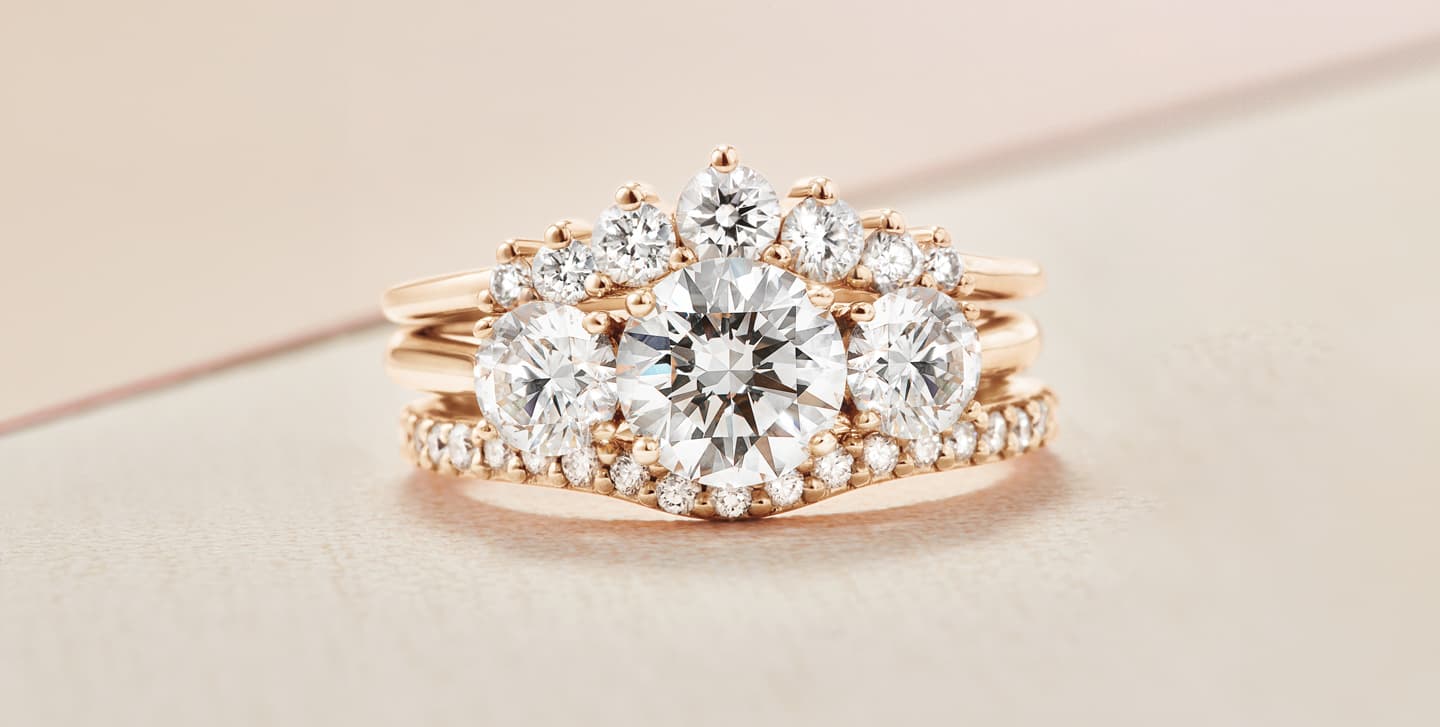
Diamonds in jewelry
Diamonds reign over the world of jewelry. An essential stone for thousands of years, diamonds fascinate people and naturally have been featured on and used for the most beautiful jewels in history and in the collections of all the famous Maisons.
From the French and English crown jewels to record-breaking auctions, diamonds have a special place in the world of jewelry. Why is that?
One answer to this is that diamonds have a very high refractive index, the highest among crystals.
This unique characteristic means that light can easily propagate through the stone, which gives diamond its incomparable shine.
Beyond this characteristic, diamonds are also famous for their quality. What defines this quality? This is what we will now look at.
—— The quality of a diamond: the essential 4 Cs
To determine and define the quality of a diamond, a universal method is used. This is the 4 Cs method, developed by the Gemological Institute of America - GIA - in 1931.
Did you know that?
The GIA is one of the reference organisations for diamonds. Located in New York, it was the first world authority on gemmology. Today, it certifies almost all certified diamonds in circulation.
Besides the GIA, the most famous and prestigious certifications are those of the HRD of Antwerp for "Hoge Raad voor Diamant" or IGI (International Gemological Institute)
What do the 4 Cs stand for?
a. Carat
The first C stands for carat which corresponds to the weight of the stone.
Isn't the term carat also used for the quality of precious metals? Yes it is, but it does not mean the same thing: they should not be confused!
For a stone, the carat corresponds to the measurement of its mass/weight. The reference being 1 carat = 0.20 grams.
For a metal, the karat corresponds to a unit of measurement of the purity of precious metals such as gold. It is the term used to refer to the quality of the metal, such as 18K gold.
If we come back to diamonds, this first C of carat is particularly important since it will be largely responsible for its price. The price of a diamond is exponential according to its weight and therefore, the more important its caratage is, the higher its price is.
Note: the price of a diamond is not proportional to its weight. A 1.5 carat diamond is three times the weight of a 0.5 carat diamond, for example, but its price can be 5 to 7 times higher.
In concrete terms, a difference - even a tiny one - of 0.2 or 0.3 carats between two stones can considerably increase the price of a diamond jewel!
Exemple:
- The Lady in white gold and diamond with a 0.8 carat stone for a price of about 5 000 €.
- The Lady in white gold and diamond with a 1 carat stone for a price of about 9 000 €.
b. Color
The less colour a diamond has, the closer it is to pure white, the better the quality.
You may ask: “ How can we measure this? ”
The diamond industry uses a color scale to classify diamonds by quality. The scale ranges from D to Z. Here are some examples:
D is Exceptional White +, which is the purest white in a diamond.
E is Exceptional White.
G is Rare white +.
H is Neutral white.
I & J is Slightly-tinted white.
K & L is Tinted white.
The evaluation of the color of a diamond corresponds to the first letter that you find in the famous three letters which define a diamond like GVS, HIS or DIF.
Note: Quality jewelry Maisons only use stones between D and I to guarantee a luminous colour and transparency for each stone.
At Gemmyo, we offer you the highest colours available in our catalogue i.e D, G and H.
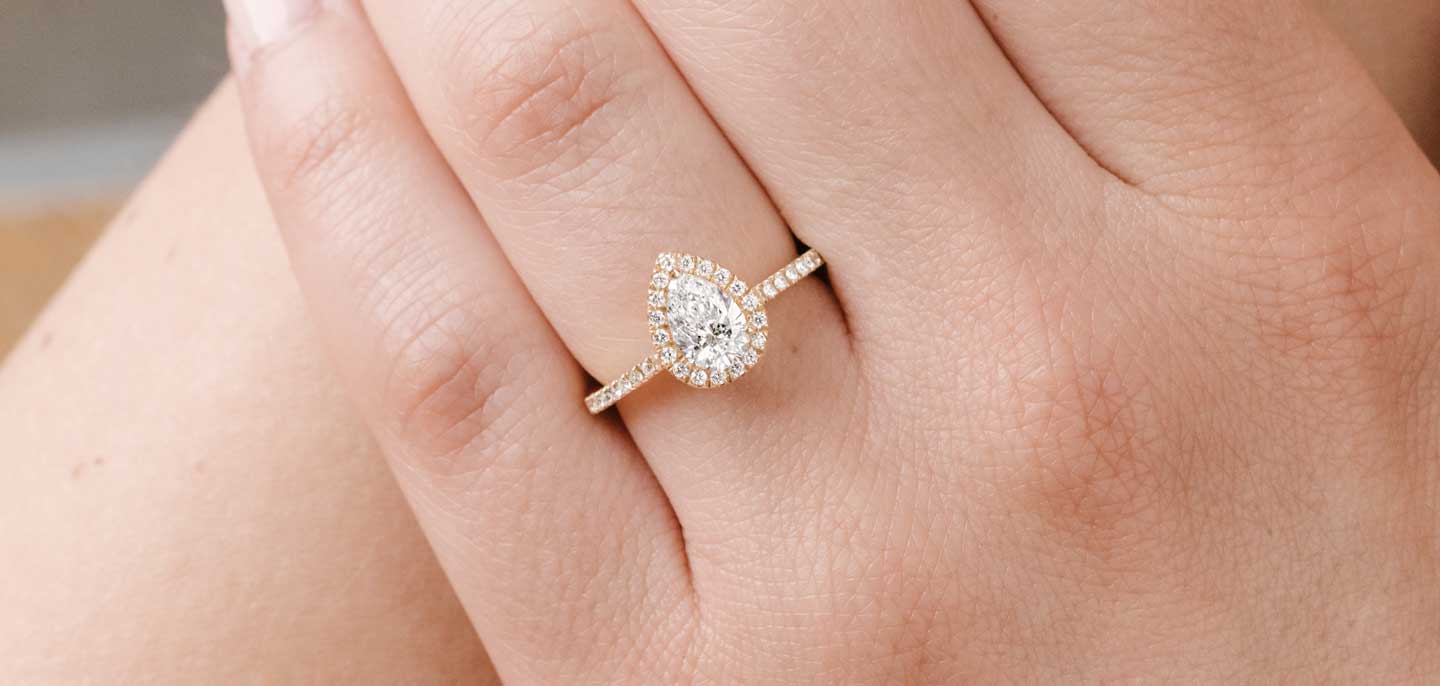
Did you know?
Measuring the colour of a diamond is done accurately with a tool called a spectrophotometer.
Be aware that white is not the only colour for a diamond.
There are many different types of diamonds: yellow, champagne, blue or even red - the rarest colour. These are called "fancy" diamonds. They can be particularly sought after; for example, the famous Pink Star diamond, the most expensive diamond in history, is not white but pink!
To find out which quality of diamond to choose, please consult our guide How to choose your engagement ring which explains this subject in detail.
c. Cut (size)
The cut of a diamond corresponds to its ‘faceting’, which means the grinding and polishing process (commonly called “cutting”) that creates a beautifully finished gemstone suitable for jewelry.
It must be said that this process is absolutely vital to ensure the final beauty of the stone because it is the faceting which will reveal its shine.
Originally, a natural diamond is a rough, A perfectly successful cut will transform a rough diamond into a shiny stone because light can easily diffuse through it. The potential of the high refraction of light will then be fully utilized.
Conversely, a clumsy cut will make the stone dull, no matter how pure it is.
Please note: this point is essential for diamonds, but of course it also applies to all otherstones!
How is the cut of a diamond graded?
The cut of a diamond is measured by what is called the cut grade corresponding to Excellent, Very Good, Good, Fair or Poor.
At Gemmyo, in order to guarantee exceptional shine, we only offer diamonds with an Excellent or Very Good cut, the highest available.
Be careful, Good or even Fair cuts will not allow the diamond to fully express its shine at all!
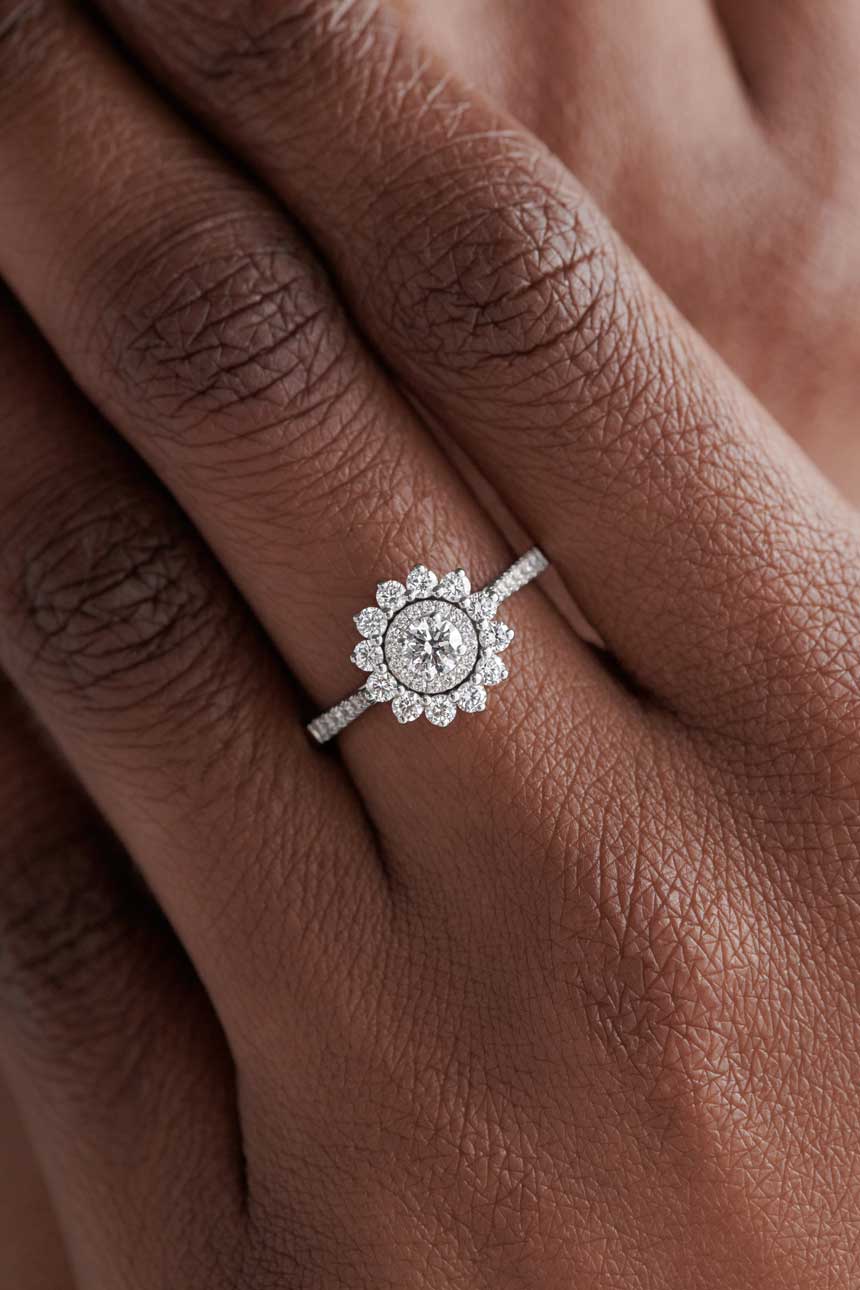
Did you know?
There are many cutting techniques for different shapes of diamond such as pear, heart, oval or princess-cut... The round cut is called the "brilliant" cut because, with 57 facets, it is considered the reference in terms of symmetry and is known to maximise the shine of a diamond.
d. Clarity
Clarity refers to the presence of inclusions in the stone. The fewer inclusions a diamond has, the more pure it is.
What is an inclusion?An inclusion is the presence of a foreign body that has crept into the stone at the time of its formation. This process is quite normal for a natural stone, it is even a sign that it is not a synthetic stone made in a laboratory.
Like color, purity is measured on a scale from FL to P2. Here are some examples:
FL for Flawless means no internal or external flaws visible with a magnifying glass at x10 magnification.
IF for Internally Flawless means no inclusions visible under x10 magnification.
VS1 and VS2 for Very Slightly Included to designate inclusions that are difficult to see with a x10 magnifying glass.
SI1 and SI2 for Slightly Included to denote inclusions that are visible with a x10 magnifying glass but invisible to the naked eye.
...
P2 means that the inclusions are visible to the naked eye.
This evaluation of the purity of a diamond corresponds to the last two letters that you find on the quality of a diamond like for example the GVS or HSI.
The 4 C's mean Colour, Cut, Clarity and Carat: all the characteristics necessary to define its quality!
—— A 5th C?
For a few years, an unofficial 5th C has been emerging in the world of diamond certification !
The diamond is a very standardised stone because it is exchanged all the time. Its rarity makes it the most coveted precious stone and there are organisations responsible for controlling this market.
Therefore a diamond is accompanied by a certificate of authenticity which explains in detail the 4 Cs which we have just mentioned!
At Gemmyo, all our diamonds over 0.3 carat are accompanied by a certificate.
Issued by the GIA - Gemological Institute of America - or the HRD in Antwerp, this certificate is like a passport, a unique identity card for each stone.
Why are these certificates so important?
First of all, they guarantee that the quality of the diamonds has been established in a neutral wayby independent international organisations. So there is no doubt about their objectivity.
These certificates are also important because they guarantee a certain traceability of the stones and participate in ethical commitments.
As ethics is an important subject for Gemmyo - as our 100% French production shows, we source our diamonds only from those who all respect the Kimberley process and therefore we ensure that our diamonds do not come from conflict zones.
Finally, our diamond suppliers are all RJC (Responsible Jewellery Council) certified: a highly controlled label that guarantees ethical and responsible mining.
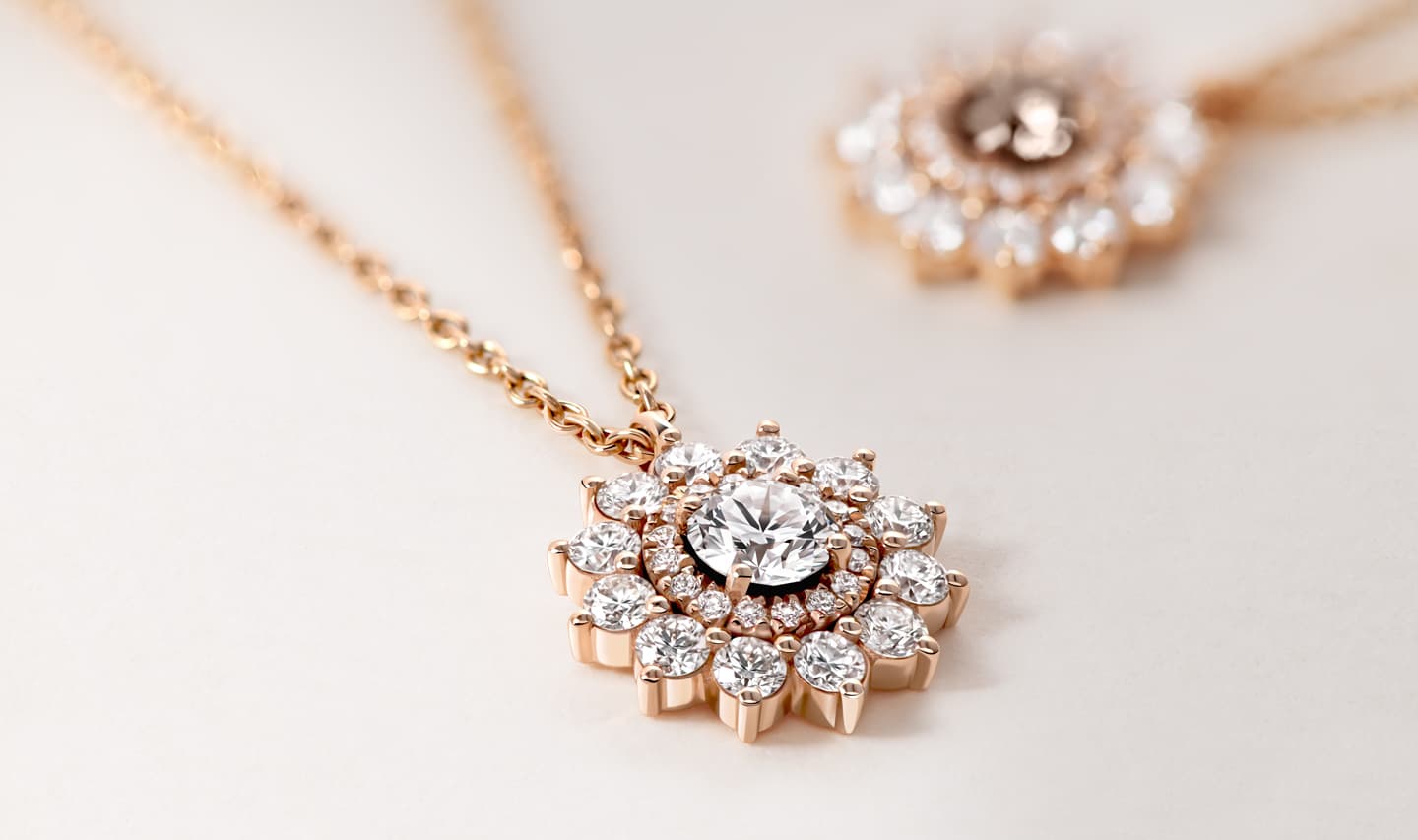
FAQs
—— "Where do your diamonds come from?"
All our diamonds come from our trusted partners in Antwerp, the diamond capital of the world!
As with precious metals, it is difficult to pinpoint the exact origin of a particular diamond specially for small diamonds, such as pavé diamonds under 2 mm.
The majority of diamonds are centralised in large diamond companies, so it is impossible to isolate a particular stone. These companies then, in most cases, cut and resell them.
Of course, the origin of a diamond often raises a lot of questions because, quite rightly, it is necessary to ensure its quality and guarantee that its extraction site is ethical. So how can you be sure that your diamond is ethical?
First of all, you should know that buying a diamond ring through an institutional jewelry brand guarantees maximum reliability. The jewelry trade is extremely controlled and we have access to partners who have signed up to all the existing ethical regulations. This is obviously not the case with a trader who sells his diamonds illicitly.
Secondly, the diamond dealers selected by Gemmyo have all been labelled by the RJC (Responsible Jewellery Council), a non-governmental organisation whose mission is to ensure that the value chain of the jewelry sector is as responsible as possible. So, in order to be recognised by the RJCmeans you have to go through a variety of tests to prove ethical sourcing, respecting human rights and taking into account social and environmental responsibility. This label is a real commitment, as it imposes strict rules to be followed.
Finally, as far as quality is concerned, at Gemmyo we have gemologists whose main mission is to evaluate and purchase all the stones we offer for your creations. Our quality dependsto a large extent on this evaluation, so there is no room for guesswork.
As you will have understood, buying a diamond outside the framework of a jewelry company is done at your own risk! If this is not your profession, it can be difficult to detect false, erroneous or counterfeit certificates. We therefore advise you to take care!
Finally, as we have seen, all our diamonds over 0.3 carat are certified by an international and independent laboratory. Another proof of seriousness, if one was really needed!
—— "What qualities of diamonds do you offer?"
At Gemmyo, we offer four qualities directly in our catalogue:
The HSI quality is offered on all our diamonds. This quality refers to colorless diamonds with no inclusions visible to the naked eye - only with a 10x magnifying glass.
The GVS quality refers to extra white diamonds with no inclusions visible to the naked eye and hardly visible with a 10x magnifying glass.
The EVVS quality is one of exceptional whiteness and clarity. EVVS diamonds have virtually no inclusions visible with a x10 loupe and are invisible to the naked eye.
The DIF quality is the rarest. It refers to incredibly white diamonds with no inclusions visible under a 10x magnifying glass; therefore of the highest purity.
Why did we choose to offer these four qualities?
HSI is one of the most popular qualities in jewelry because it is the best value for money, as the inclusions are invisible to the naked eye and the color is almost colourless white. This is a quality that the big houses often offer as their "basic" quality.
We also offer higher grades such as GVS, EVVS or DIF.
Finally, it is always possible to make a request if you want a specific grade! For this, please contact us directly.
What is the difference between HSI and GVS quality?
A GVS diamond will appear "whiter" than an HSI diamond. If you compare the two qualities in the boutique, you will see a noticeable difference! Of course, this difference is minimal compared to the difference between a DIF and HSI diamond, which is the best quality used in jewelry.
What's the difference between EVVS and DIF?
EVVS quality is used for the smart side of the perfect diamond.
Simply put, it's a perfect “in-between” between HSI (the most common quality) and DIF, the most exceptional.
—— "What is the difference between a natural diamond and a synthetic diamond?"
To understand the difference between the two, let's start by defining them:
A natural diamond is a diamond that has been created by nature. A synthetic diamond, also called a "laboratory diamond", is a diamond that has been created artificially.
These two types of diamond are strictly the same visually and chemically. However, they have some notable differences.
Also, to be clear, at Gemmyo we offer natural diamonds on all our jewels. However, we have also tested a collection that is only set with synthetic diamonds. We are one of the few jewellers (perhaps we are the only one!) to offer both types of stones, and so we can give you a sincere and unbiased opinion.
So what are the differences between natural and synthetic diamonds?
Firstly, a natural diamond is a diamond that comes from the Earth. It was created millions of years ago, when the Earth was under very high pressure and temperature. Thus, natural diamonds are a rare and limited resource.
Synthetic diamonds, on the other hand, are artificially recreated by man in a laboratory that reproduces these same conditions of very high pressure and temperature. The first difference is therefore the origin of these stones. In one case, the Earth. In the other, a laboratory.
The second difference, as you will have understood, is the rarity of natural diamonds, which cannot be compared to diamonds that can be endlessly recreated by man. To explain this point via a telling comparison, a natural diamond is like a master painting. Unique and original. It is in a way a work of art. If we follow the metaphor, the synthetic diamond would then be the perfect reproduction of the painting. Just as beautiful and made with the same colour tones, only the master's signature would be missing.
The third difference: price. A natural diamond is about 20 to 30% (depending on the jeweller) more expensive than a synthetic diamond.
A final major difference: synthetic diamonds require a huge amount of energy to be manufactured.. The chemical reactions that are used must reach about 7500 degrees for stones over 0.5 carat. All of this has of course been the case for diamonds mined from the earth, but it happened naturally millions of years ago. A recent report even shows that synthetic diamonds have a carbon footprint 4 times greater than natural diamonds: in the case of natural diamonds 160 kg of CO2 per carat cut; in the case of synthetic diamonds 500 kg of CO2.
Finally, the working conditions of the people who work in the diamond industry must of course be mentioned. In the case of synthetic diamonds, a laboratory environment does not pose any particular problems. For natural diamonds, it cannot be denied that working conditions in diamond mines are difficult, due to the use of heavy equipment and the geological risks. However, the debate is not so simple: we must not forget the impact of the diamond industry on the wages and living conditions of these populations. For example, 77,000 people employed in diamond mines are paid 66% more than the national average wage and almost five times the country's living wage.
—— "Is a diamond really unbreakable?"
With a 10/10 on the Mohs scale, diamonds are the strongest mineral on the planet, but this does not mean that they are indestructible. Yes, a diamond is scratchproof... but it is not unbreakable!
As we have seen, the main characteristic of diamonds is their extreme hardness, which is also - contrary to popular belief - a source of risk. Indeed, diamonds are so hard that they have difficulty absorbing shocks and can therefore break into a thousand pieces.
Of course, to reassure you, this only happens very rarely (it requires a significant impact on a specific area). However, it is still essential to take care of your jewelry, even diamond jewelry
—— "Which metal should be partnered with a diamond?"
It's hard to find a colour that doesn't go with the white of the diamond!
White gold, yellow gold or platinum are classic choices, and they are a safe option that you won’t regret.
Black gold or rose gold, are bolder, more original choices.
Diamonds allow you to have complete freedom in your choice of metal... even if this freedom comes at a price!
—— "What is the occasion for giving a diamond?"
With its incomparable shine, the diamond is a reference in jewelry and is offered for all occasions!
Its extreme hardness and durability over time make it the ultimate symbol for an engagement ring. It is not even a symbol anymore, it is a tradition shared all over the world.
Diamond is associated with those born in the month of April. Diamond is the birthstone of the zodiac sign Cancer and is traditionally given for the 10th and 60th wedding anniversary!
Discover our diamond jewelry.
More specifically, discover our diamond engagement rings.
See all our precious stones.

















